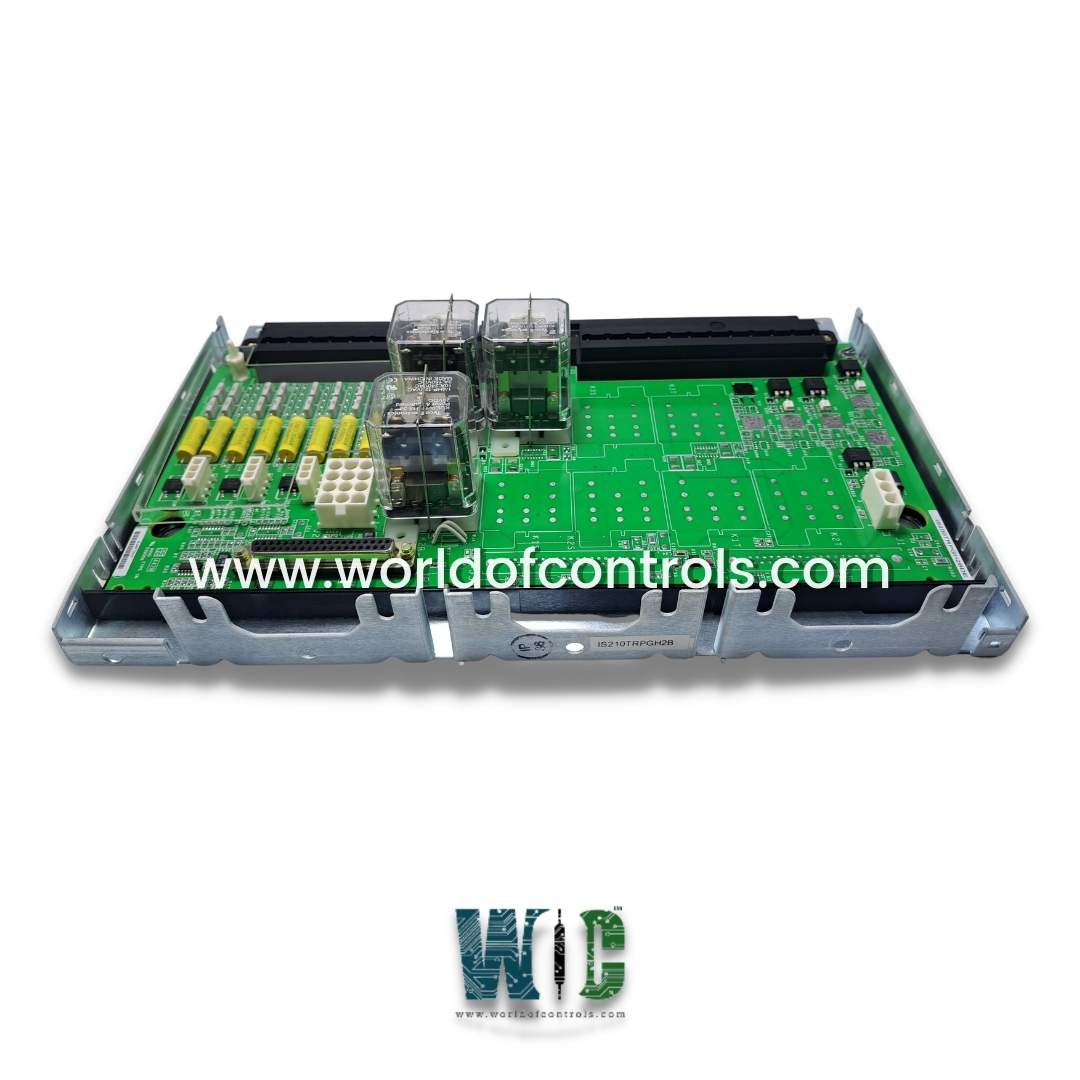SPECIFICATIONS
Part No.: IS210TRPGH3B
Manufacturer: General Electric
Product Type: Primary Trip DIN-Rail Module
Size: 12 in. x 8.4 in. x 6.3 in.
Mounting: Four mounting holes, 10 screws
Temperature Operating: -30 to 65oC
Availability: In Stock
Country of Manufacture: United States (USA)
Series: Mark VI
Functional Description
IS210TRPGH3B is a Primary Trip DIN-Rail Module developed by GE. It is a part of Mark VI control system. Serves as the hardware foundation for the Gas Turbine Primary Trip (TRPG) system. It interfaces directly with the Primary Turbine Protection controller, which can be either VTUR (Voted Turbine Control Module) or PTUR (Primary Turbine Control Module), depending on system configuration.
Features
- Triple Voting Relay Circuits: The TRPG module is equipped with nine magnetic relays, organized into three voting circuits. This redundancy ensures that a trip signal is only sent if confirmed by a majority of the control logic—helping to prevent false trips while still ensuring fast protection in emergencies.
- Trip Solenoid Interface (ETDs): The module directly controls three trip solenoids, which serve as the final actuation mechanism for turbine shutdown. These solenoids receive power and command signals from the TRPG board, ensuring swift disconnection of fuel and other hazardous processes during faults.
- Flame Detection Integration: The board supports connections from up to eight Geiger-Mueller® flame detectors, widely used in gas turbines for reliable flame detection. These detectors help validate combustion presence, and their signals can trigger trip actions if flames are unexpectedly extinguished.
- Integration with TREG Board: The TREG (Emergency Trip Board) operates alongside the TRPG to provide both primary and emergency trip paths, enhancing overall system protection integrity.
Installation & Wiring Instructions
- Trip Solenoid Wiring: Connect the cables for the three trip solenoids (ETDs) to the first I/O terminal block on the TRPG board. These connections carry the 125 V DC power needed to actuate the solenoids.
- Flame Detector Wiring: If flame detectors are used, their signals should be wired to the second terminal block. This block receives inputs from each of the Geiger-Mueller tubes used in the application.
- Power Supply Connections:
- J1 Plug: Supplies 125 V DC power for the trip solenoids.
- J2 Plug: Transfers power from the TRPG to the TREG board.
- J3, J4, J5 Plugs: Provide operating power to the flame detectors.
Diagnostics
- The diagnostics of the Primary Trip Module are managed by the I/O board, which performs continuous health checks to ensure the safe and effective operation of the turbine protection system. One of the key diagnostic functions involves monitoring the feedback from the trip solenoid relay driver and its contacts. This ensures that the command to trip is successfully issued and that the relay physically responds as expected. If the relay does not function correctly or if the contact feedback does not match the command signal, a diagnostic alarm is triggered.
- Another critical diagnostic area is the monitoring of the solenoid power bus. The 125 V DC supply that powers the trip solenoids must remain within a specific voltage range to ensure reliable operation. If the voltage drops too low or rises too high, the system generates an alert, as an unhealthy power bus could compromise the ability of the solenoids to trip the turbine during an emergency.
- The flame detectors, typically Geiger-Mueller® tubes, also rely on a stable excitation voltage. The diagnostics system checks this voltage continuously. If the excitation voltage is found to be outside acceptable limits—either too low or too high—it can affect the reliability of flame detection, leading to potential false alarms or missed flameout events. When such a condition is detected, the system raises a diagnostic fault for immediate attention.
- In addition to signal and power diagnostics, also includes a hardware compatibility check through ID devices embedded in connectors JR1, JS1, and JT1 on the terminal board. Each of these connectors includes a read-only chip containing the board’s serial number, type, revision, and plug location. During initialization and regular operation, the I/O board interrogates these ID chips to verify that the correct terminal board is installed. If a mismatch is detected, such as using the wrong board revision or connecting it to the wrong location, a hardware incompatibility fault is generated.
World of Controls has the most comprehensive collection of GE Mark VI components. Please contact WOC as soon as possible if you require any extra information.
Frequently Asked Questions
What is IS210TRPGH3B?
It is a Primary Trip DIN-Rail Module developed by GE.
What happens if the trip solenoid relay does not function correctly?
If the relay driver sends a signal but the relay contact feedback does not confirm actuation, the system generates a diagnostic alarm indicating a potential trip circuit failure.
How does the system monitor solenoid power?
The I/O board checks the 125 V DC power bus feeding the trip solenoids. If the voltage is outside safe limits (too high or too low), a fault alarm is raised.
